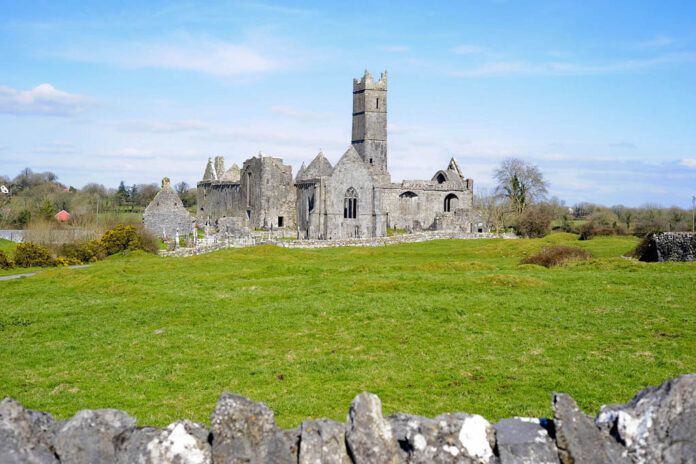THE architectural significance of Quin has been safeguarded by the planning appeals board, who have rejected attempts to erect a mast of over 20 metres in height in the village.
The decision of An Bord Pleanála to refuse permission to Vantage Towers for a telecommunications tower at Quinville South has copper-fastened a refusal late last year by Clare County Council.
An inspector from the board recommended rejection of the appeal, and this was backed by the executive of An Bord Pleanála. A direction from the board found that the tower “would have an adverse effect on the character of the Quin Architectural Conservation Area, and would seriously detract from and injure the visual amenities of the area”.
The direction added that in terms of the visual impact, the closeness to the ACA and the village, the proposed lattice tower did not comply with either the guidelines on telecommunications structures or those on the protection of architectural heritage. It concluded that the proposed structure “would have a significantly negative visual impact on the area and would have an adverse effect on the character of the ACA”.
In his report, An Bord Pleanála inspector Adrian Ormsby examined the grounds on which the mast was refused permission by Clare County Council. He gave extensive consideration to a range of issues, including the zoning and status of the site, as well as the need for the mast and the existing telecommunications infrastructure.
Over the course of his deliberations, Mr Ormsby noted an offer by Vantage Towers to reduce the height of the proposed tower from 24 to 21 metres. Mr Ormsby said that, despite that offer, he agreed with County planners that “the proposed development would inherently alter the character of the village and thereby would have a severe negative impact on the character of the village and the visual amenities of the area”.
In assessing the appeal, Mr Ormsby also reviewed mobile and data coverage maps for the area around Quin. In that case, he agreed with the assertion of Vantage Towers that there is a need for improved coverage.
He also found that the company had succeeded in making a technical justification for the proposed mast. However, after visiting the site at Quinville South and the surrounding area, Mr Towner concluded the tower would have “a significant visual intrusion on the village core and its streetscape”.
On the whole, the inspector found that the planning application “does not meet the ‘last resort’ test” as set out in the 1996 Telecommunications Antennae and Support Structures Guidelines.
When the application was originally submitted to Clare County Council last September, it sparked significant local opposition. A total of ten submissions were made by individuals, residents’ associations and community and voluntary bodies. Quin Tidy Towns Committee and the Quin Heritage group expressed their opposition. Submissions opposing the development were also made by a number of residents in nearby estates including Dún na Mánach, Manor View, Arbutus Grove and Quin Gardens.
In addition, a report from a section of the Department of Housing, Local Government and Heritage (DHLGH), Department’s Development Applications Unit (DAU) highlighted a number of archaeological concerns. It noted that the presence of ten sites of archaeological interest in proximity to the site.
These include Anglo-Norman and early Christian monuments. The DAU also pointed out that “ previously unknown archaeological features/deposits associated with these monuments” could be disturbed by the proposed development.
Last November, County Planners rejected the application on the grounds that the proposed structure would materially contravene the zoning of the site and adversely affect Quin as an ACA. In addition, planners noted national guidelines stating that free-standing masts should only be located, as a last resort, in residential areas or close to schools. County Planners added that the mast development would also impact negatively on a medieval settlement area.


